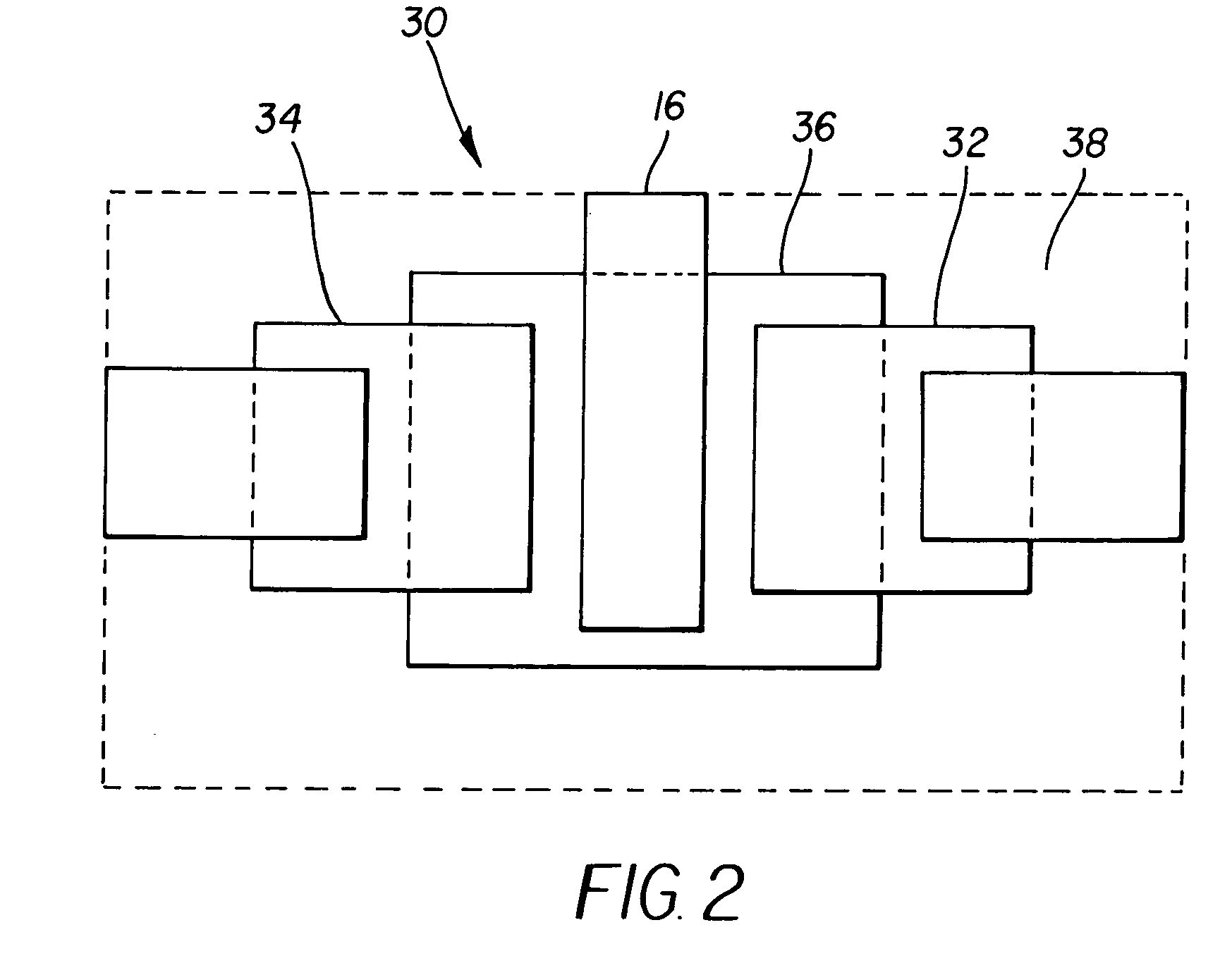Digital film grain
a digital film and grain technology, applied in the field of digital film grains, can solve the problems of reducing degrading the spatial resolution of the images it can convey, and increasing the thickness of silver film, so as to improve the spatial resolution and improve the imaging resolution
- Summary
- Abstract
- Description
- Claims
- Application Information
AI Technical Summary
Benefits of technology
Problems solved by technology
Method used
Image
Examples
Embodiment Construction
[0019]The present invention will be directed in particular to elements forming part of, or in cooperation more directly with, the apparatus in accordance with the present invention. It is to be understood that elements not specifically shown or described may take various forms well known to those skilled in the art.
[0020]Referring now to FIG. 1, a p-type layer 36 is deposited on the surface of the crystalline silicon substrate 12 to constitute the central semiconductor of a field-effect transistor 30. Two patches of n-type layer of amorphous silicon are deposited on the surface of the crystalline silicon substrate 12 overlapping p-type layer 36 and fashioned into source 32 and drain 34 of a field-effect transistor 30 shown in FIG. 2. An insulating layer 38 coats p-type layer 36 and at least part of source 32 and drain 34. A gate electrode 16 is fashioned of metal over the p-type layer 36, but separated from electrical contact with that p-type layer 36 by insulator 38, to complete fa...
PUM
 Login to View More
Login to View More Abstract
Description
Claims
Application Information
 Login to View More
Login to View More - R&D
- Intellectual Property
- Life Sciences
- Materials
- Tech Scout
- Unparalleled Data Quality
- Higher Quality Content
- 60% Fewer Hallucinations
Browse by: Latest US Patents, China's latest patents, Technical Efficacy Thesaurus, Application Domain, Technology Topic, Popular Technical Reports.
© 2025 PatSnap. All rights reserved.Legal|Privacy policy|Modern Slavery Act Transparency Statement|Sitemap|About US| Contact US: help@patsnap.com



